Big Maths Characters and Phrases
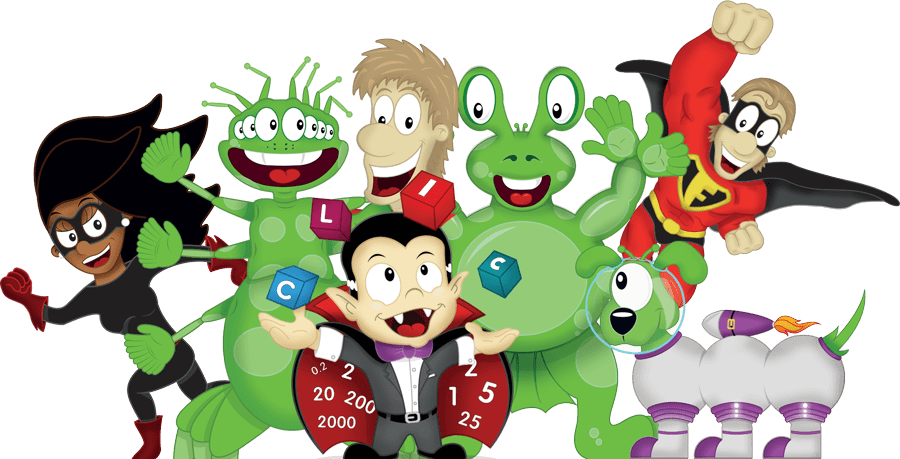
Keep it simple, keep it fun!
Maths should be a fun, friendly and positive subject to teach and learn, and we encourage you to resist using silly academic terms (like commutative law, cardinal/ordinal/nominal, frequency etc.) that bear no relevance to a child’s reality! In Big Maths, we created friendly characters and phrases that children can relate to, which make sense and are easier to understand. This section of the website describes some of our friendly characters and terms that you might encounter. If we can help, please contact us.
Pim is an alien from the planet CLIC.
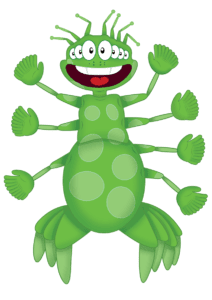
Pim is a friendly character who has 3 arms on one side and 4 arms on the other side, so he has 7 arms in total. There are 3 legs on one side and 4 legs on the other… so he must have 7 legs! Pim has 3 ears and 4 ears, 3 nostrils and 4 nostrils, and he has 3 eyes and 4 eyes! So once children accept Pim’s principle that 3+4=7 (arms, eyes etc), they easily accept that it must be true for other ‘Learn Its’ facts. If ‘2 add 3 equals 5’ then we can use Pim to communicate that 2 add 3 will always be 5, no matter what ‘the thing’ is.
Pom is an alien, he lives with Pim on the planet CLIC.
Pom is a friendly character who helps children to learn 4 key mathematical words:
- multiple,
- factor,
- square,
- and prime.
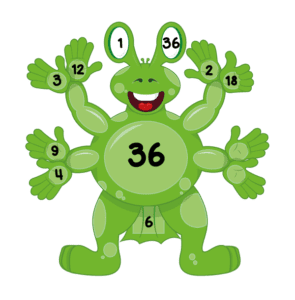
We use Pom as a fun template for presentation of these key terms:
- The product (answer) number goes in his tummy,
- Record 1 and the product itself (i.e. the number in question from his tummy) in each eye. (Always write these two factors first, always in their special place.)
- Any pair of factors that are discovered are written as a pair at the end of each arm. Check that each pair multiplied together equals the number in Pom’s tummy!
If the number has a Square Root, this goes in his tail!
By the way…
Pim and Pom feature in our game Pim vs Pom! For more details, click here!
Squiggleworth is Pim’s Pet!
Squiggleworth is Pim’s pet and he can be used to help children have fun while they practice partitioning numbers.
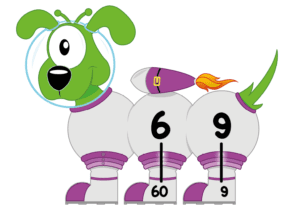
Each of the 10 digits (0 – 9) and each of the 26 letters in our alphabet are just squiggles on a bit of paper. They are marks that don’t have any value in themselves. We learn to attach meaning to these squiggles and must help children do the same, so that when they see the squiggle ‘4’, they think ‘four’ as a word and think of the amount that is ‘four’! There are a number of steps that help children to learn the value of squiggles (place value) and Squiggleworth is there to make it friendly and fun. Each segment on Squiggleworth’s body are for the digits of numbers to be written in, using his feet to show the number of zeros after each.
Count Fourways is an intergalactic traveller!
The ‘four ways’ are counting in 1s, 2s, 5s and 25s. Here we introduce the children to another Big Maths character, called Count Fourways. He is called Count Fourways since the children simply learn to count out loud in four crucial ways. Each of these four ways is built upon progressively and in alignment with the children’s developing understanding of place value.
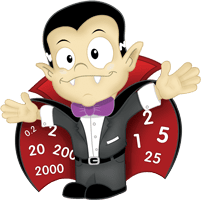
Our friendly character Mully Multiple!
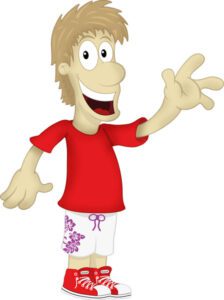
Meet ‘Mully Multiple’! He is known as Mully for short. Mully likes to explore and to hide. He likes to hide behind the biggest multiple of a number he can find.
‘Where’s Mully?’ is a Big Maths game, the objective is to find where Mully is hiding. It extends children’s knowledge of multiples and how known multiples can be added to other known multiples to find new multiples. Children playing ‘Where’s Mully?’ are actually learning to become proficient at division!
Super Fab
Super-FAB helps children with their mental maths and fluency! He helps to explain how they move along the FAB continuum reaching the brain-only moment:
- Full Written Method
- Abridged Written Method
- Brain Only
Super-FAB is really good at focussing on holding numbers in his head, doing something else, and then coming back to those numbers again!
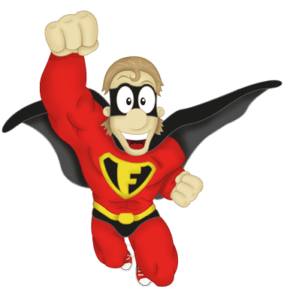
Speedy Col
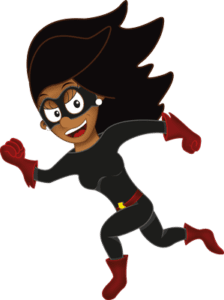
Speedy Col has a lot of energy! She likes to do everything quickly. It’s not just about being fast though, she’s careful too and is really good at Column Methods. Speedy Col likes everything done properly and is motivated to get the right result!
Big Maths Terminology
Smile Multiplication
As children begin to multiply multiples of 10, 100 etc. the zeros can look very complicated. Smile Multiplication simplifies this, reminding them to ‘do the tables bit’, count the zeros, then put the zeros on the answer. A lot easier!
Smile Multiplication works for decimals as well!
Remember To:
- swap ones for tens
- do the tables bit
- count the zeros
- add the zeros to your answer
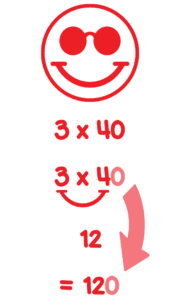
Coin Multiplication
Coin Multiplication helps children to find multiples of numbers quickly and easily! It is a process that children can be skilfully coached in to ensure that they can see deep relationships between numbers and operations…as well as find correct answers!
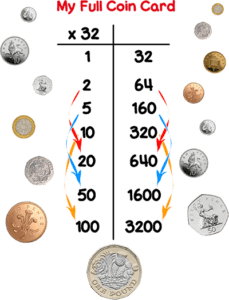
Take a number (usually a 2d number) and then find the 1st, 2nd, 5th, 10th, 20th, 50th, and 100th multiples of that number. (If the 200th multiple is included as well then that is all of the denomination of coins that we use.) Children are shown how all of these multiples can be found simply by:
- multiplying by 10,
- halving and
- doubling.
Fact Families
Fact Families show children a very pure form of ‘It’s Nothing New’, in other words, ‘Now we know this, we must also know this, this and this.’ Children do not need to learn all addition, subtraction, multiplication, and division facts with instant recall, they just need to learn 1d/1d facts for addition and multiplication along with one other thing… the Fact Family concept.
If you know the addition or multiplication fact, you automatically know the subtraction and division facts.
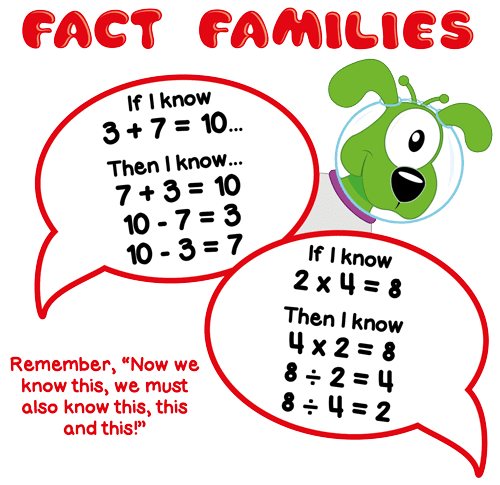
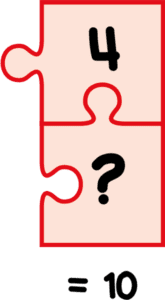
Jigsaw Numbers
If you think of a 2-piece jigsaw with a number on each piece, what do they add up to? Jigsaw Numbers are special (10, 100, or 1000 for example). Explain the jigsaw analogy and ask children to complete the jigsaw, simple! For example, if 4 is one jigsaw piece, ask the child if they can tell us what would be on the missing piece if the total is 10. If we can see the maths it helps us to understand the maths.